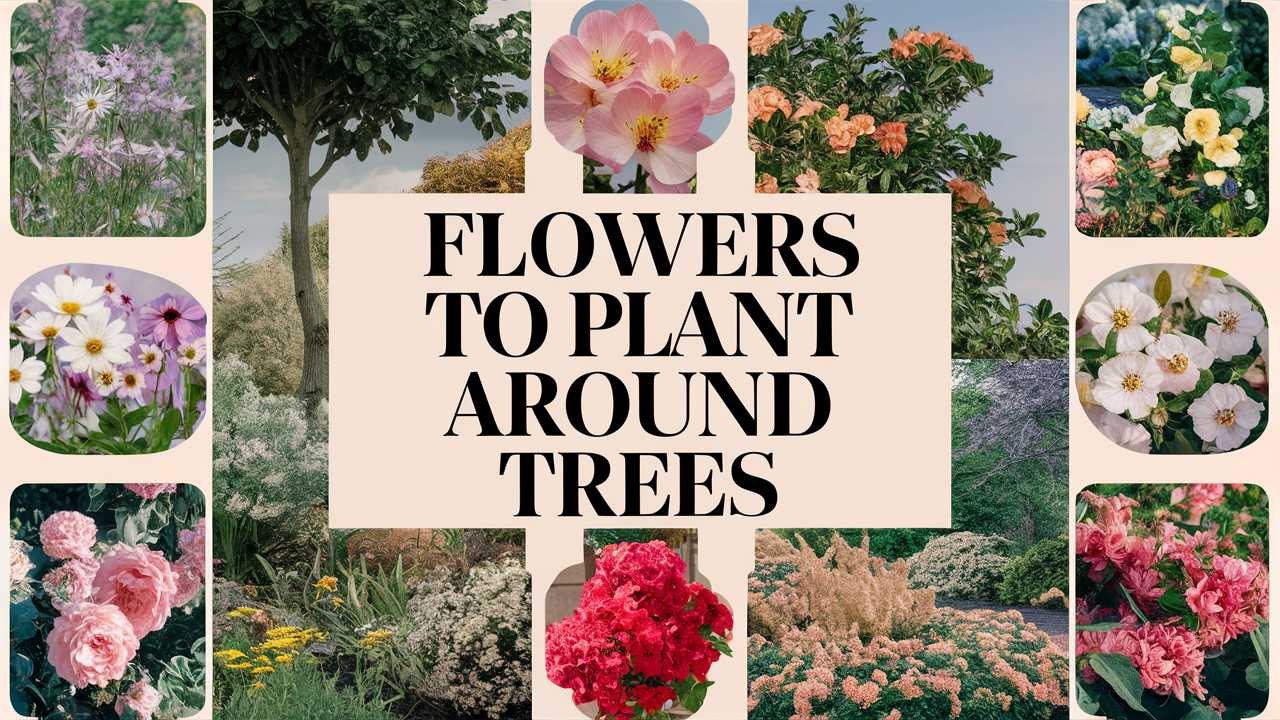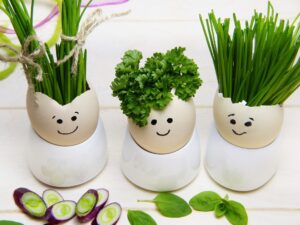The shaded areas beneath trees can be transformed into vibrant, colorful, and visually appealing spots in your yard. This guide covers a variety of flowers that can thrive in the shade or partial shade created by trees. Each of these plants not only coexists beautifully with trees but also enhances the surrounding ecosystem.
Anemones
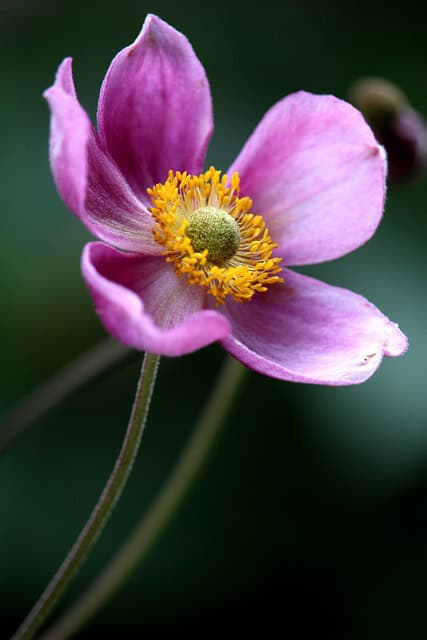
Anemones are enchanting perennial flowers that can introduce a delightful splash of color to shaded garden areas. These versatile plants bloom in various shades, including white, pink, and deep purple, typically during early spring. The fact that they flower before the tree leaves fully unfurl allows them to soak up all the sunlight they require for flourishing.
Anemones prefer rich, well-drained soil and consistent moisture, making them perfect companions for shallow-rooted trees that might struggle to compete for water. Their root system typically spreads horizontally, meaning they won’t heavily disturb the surrounding soil. When planting anemones, consider pairing them with lighter-colored varieties to create contrast and increase the visual appeal of your space.
The Japanese anemone, for instance, blooms later in the season (fall) and offers longer-lasting interest. With their delicate, saucer-shaped blooms and graceful stems, anemones can also be cut for a vase, allowing you to enjoy their beauty indoors.
Bugleweed
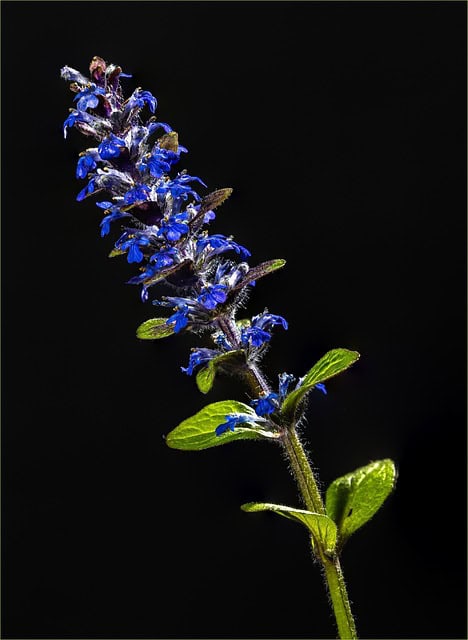
Bugleweed, or Ajuga reptans, is a delightful perennial ground cover known for its low-growing habit and vibrant spikes of blue to purple flowers that emerge in late spring. With its ability to thrive in shade and adapt to various soil types, Bugleweed makes an excellent choice for planting under trees.
This plant can create a lush carpet of foliage, often with glossy leaves that may exhibit variations of reddish-purple tones. Its vigorous growth habit means it can effectively suppress weeds, making maintenance easier for gardeners. Another advantage is that Bugleweed is relatively drought-tolerant once established, though it appreciates some moisture.
While Bugleweed is a great ground cover option, it can spread aggressively. To control its growth, try containing it within defined edges or borders to prevent it from overtaking other plants.
Japanese Spurge
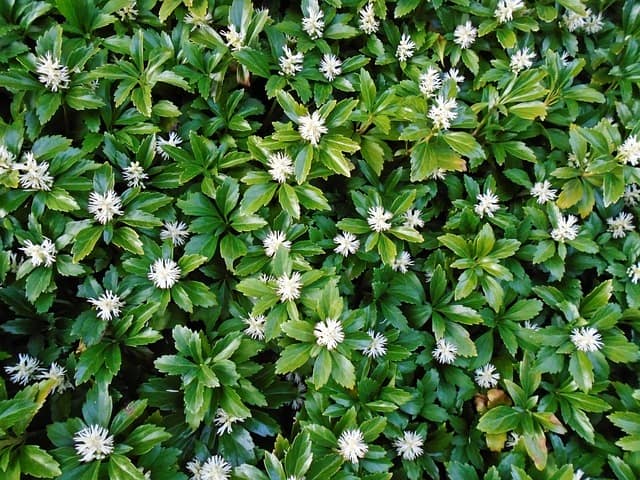
Japanese Spurge (Pachysandra terminalis) offers an alluring solution for gardeners looking for shade-loving ground covers. Its evergreen leaves maintain a lush green hue year-round, making it a staple plant for shaded areas. The small white flowers it produces in spring are charming but often take a backseat to the foliage.
One significant feature of Japanese Spurge is its ability to thrive in dense shade, where many other plants would fail. This quality is especially notable in gardens with heavy tree canopies. Its shallow root system makes it non-invasive, allowing it to coexist peacefully with tree roots.
Furthermore, Japanese Spurge is an excellent choice for those seeking low maintenance. Once established, it requires minimal care, just occasional watering during prolonged dry spells. With its ability to suppress weeds through dense growth, it can save you considerable time and effort. In planting schemes, consider underplanting it with other early bloomers for an intriguing transition of color throughout the seasons.
Lily of the Valley
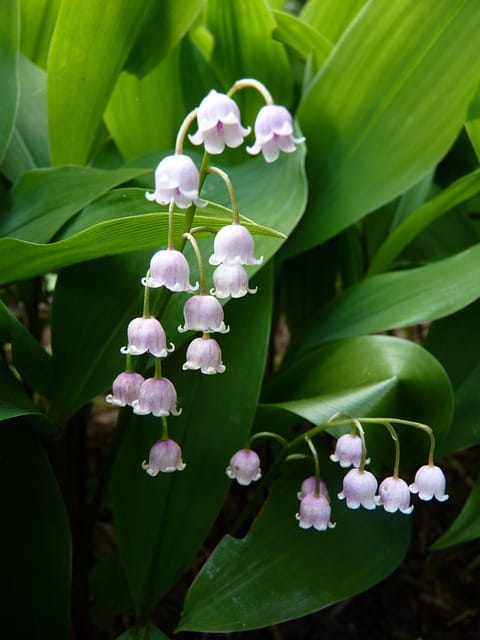
Lily of the Valley (Convallaria majalis) is a classic woodland perennial that features delicate, fragrant bell-shaped flowers. Blooming in the late spring, these flowers bring a sense of charm and nostalgia to gardens, often evoking memories of grandma’s flower patch.
Lily of the Valley thrives in moist, well-drained soils enriched with organic matter. This hardy plant will spread vigorously over time, creating beautiful colonies and transforming bare patches beneath trees into luscious green carpets. When planting, consider giving it a little room to spread while being mindful of its potential toxicity if ingested.
A fantastic quality of Lily of the Valley is its ability to thrive in almost complete shade, making it ideal for those deeply shaded areas where most plants would struggle. As it blooms in early spring before the tree canopies fully develop, it takes full advantage of the sunlight available. The lovely scent of its flowers can also be a delightful addition to the sensory experience of your garden.
Solomon’s Seal
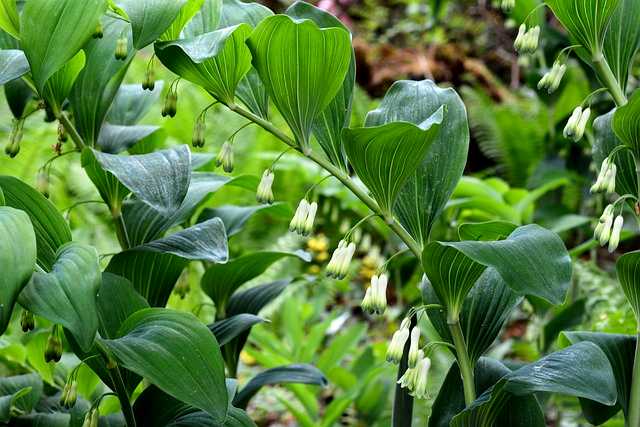
Solomon’s Seal (Polygonatum biflorum) is prized for its elegant design and unique blooming structure. The plant boasts arching stems adorned with pairs of dainty white, bell-shaped flowers hanging delicately beneath the foliage. Not only does it add visual interest, but it also has a soothing, tranquil quality that suits shaded areas well.
Solomon’s Seal thrives in rich, moist soil and can tolerate a great degree of shade, making it a perfect companion for trees with widespread roots. It’s ideal for adding height and movement to garden design without overcrowding the area. Additionally, its foliage provides an excellent backdrop for smaller plants, creating a layered garden aesthetic.
Beyond their striking appearance, Solomon’s Seal has historical medicinal uses and can be an exciting conversation starter among gardeners interested in plant lore. They’re also known to attract pollinators, contributing to the blossoming of your garden’s ecosystem.
Bergenia
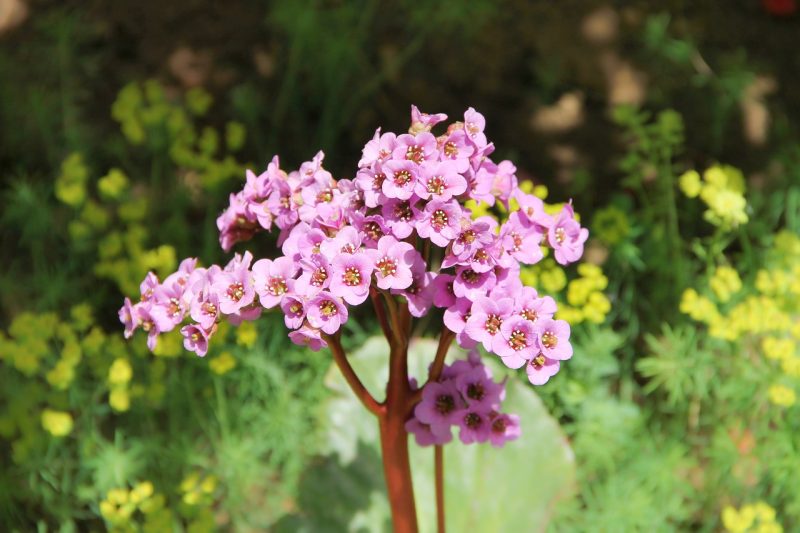
Bergenia, also known as “pig squeak” due to the sound made when you squeeze its thick leaves, is a fantastic addition to shade gardens. This perennial showcases broad, glossy leaves that can endure various soil conditions and attract attention with their vibrant pink or mauve flowers in early spring.
Bergenia thrives in part shade to full shade, making it a solid choice for tree canopies. Its upright flowering stems rise above the leaves, creating an appealing visual contrast that can fill empty spaces beautifully. The plant is drought-tolerant once established, requiring little maintenance while efficiently suppressing weeds with its dense foliage.
A wonderful feature of Bergenia is its adaptability to soil types; it can flourish even in challenging clay soils, making it an excellent choice for gardeners looking for resilience and beauty in harsh conditions. While these plants do spread gradually, they can be divided to control spacing and add to other areas of the garden.
Bleeding Heart
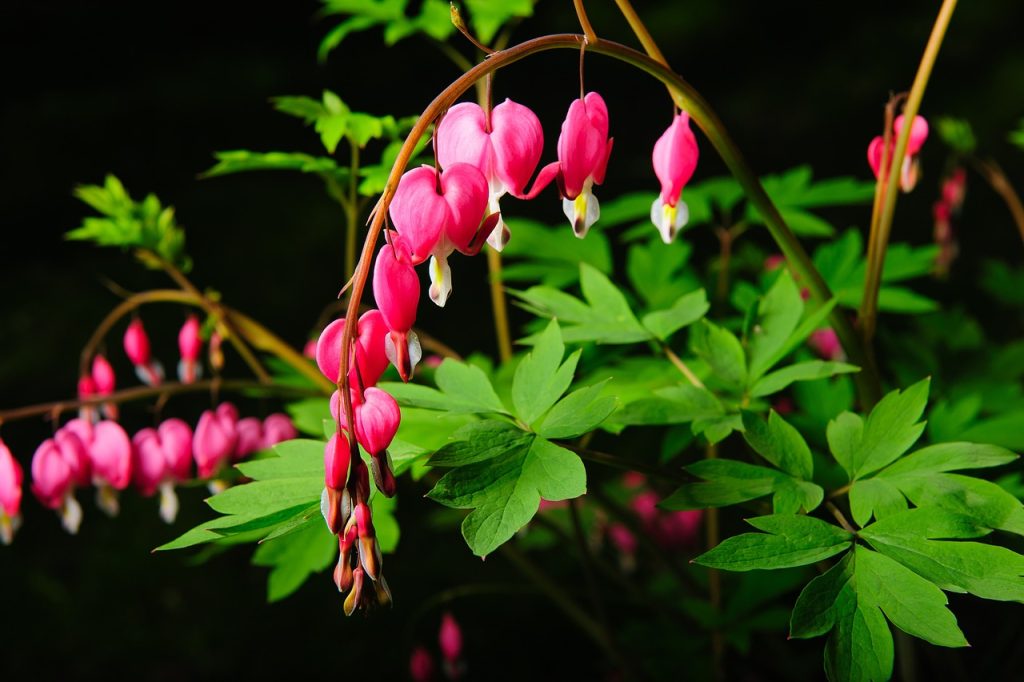
Bleeding Heart (Dicentra spectabilis) captures the hearts of many with its unique, pendulous flowers that resemble tiny, romantic hearts—a true delight of spring. These perennials bloom in pink or white with lush green foliage, filling a spot beneath trees with a gentle whimsy.
Bleeding Hearts prefer well-drained, rich soils and can thrive in partial to full shade conditions, making them ideal for tree wells and shadowy corners. They typically bloom in late spring and early summer before entering dormancy in late summer, allowing space for other flowers to shine in the landscape.
While bleeding hearts do require moderate hydration, their beauty more than compensates for the demands of care. Their unique flowering structure adds not only beauty but also serves as a vital nectar source for early season pollinators, enhancing the ecological value of any shaded garden.
Columbine
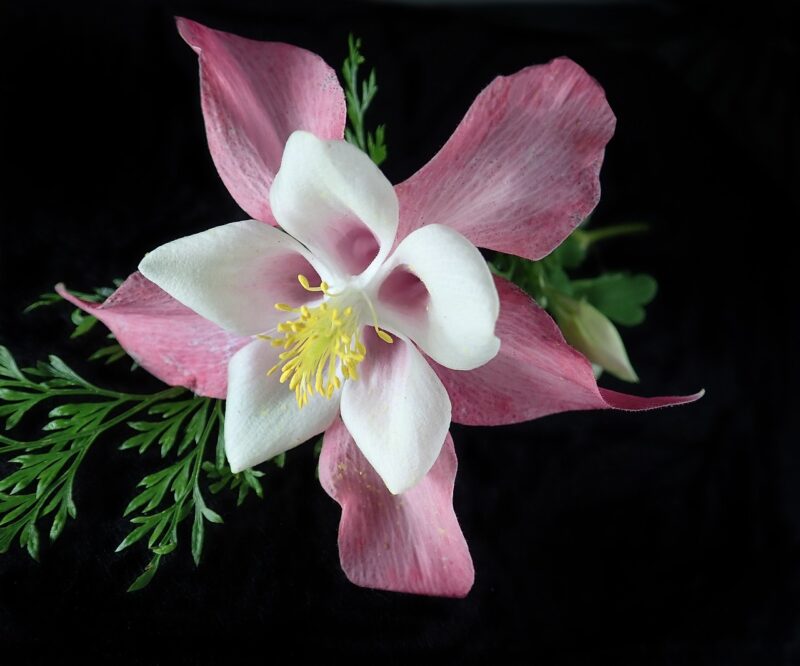
Columbine (Aquilegia) is a classic perennial known for its bell-shaped flowers that bloom profusely in spring. With a wide range of colors, including shades of yellow, blue, red, and white, these flowers offer diversity and a whimsical quality to gardens shaded by trees.
Columbine thrives in well-draining soil and can grow well in partial to full shade. They prefer moist, fertile conditions, making it an advantage in shady spaces where competition for resources is less fierce. These plants often self-sow, leading to joyful surprises each season as new seedlings emerge, enhancing the color palette of your garden.
Their unique, dissected leaves and distinctive flower shapes not only compete for attention but also attract hummingbirds and bees, vital for pollination in your garden. By planting Columbine in clusters, you can create a captivating focal point that draws the eye and nourishes local wildlife.
Daylilies
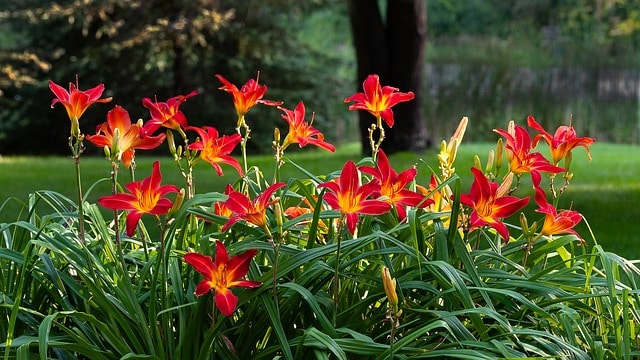
Daylilies (Hemerocallis) possess an extraordinary versatility, performing admirably in diverse soil and light conditions, including shady areas. These perennials are renowned for their engaging blooms, which can come in an extensive color range, from deep purples to soft yellows.
While each daylily bloom lasts only one day, the plant produces an abundance of buds, ensuring an ongoing floral display throughout summer. Their resilience is remarkable; they adapt to various environments and resist disease, making them a favorite for novice and experienced gardeners alike.
Daylilies prefer well-drained soil and moderate moisture but can endure periods of drought once established. You can enhance the visual impact by planting them in mass plantings or as a transition from taller plants to create a layered effect in your garden. Daylilies’ drought resistance and low maintenance make them perfect companions for tree roots that may compete for moisture.
Foam Flowers
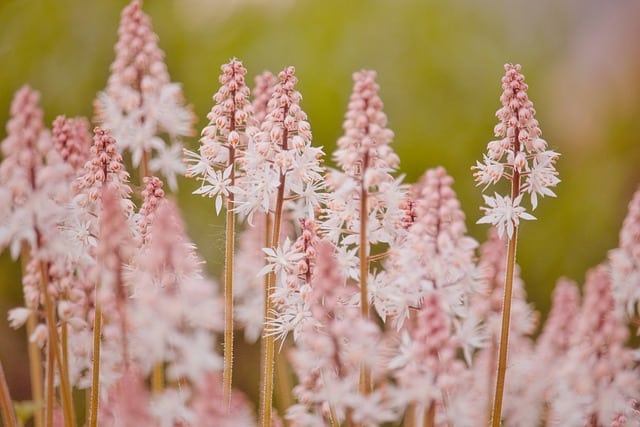
Foam Flowers (Tiarella cordifolia) are delicate perennials that display clusters of small, starry flowers atop slender stems in spring. Their unique look, combined with attractive, lobed foliage, adds layers of interest to the ground beneath your trees.
Known for thriving in moist, shady conditions, foam flowers prefer organically rich soil yet are adaptable to various well-drained substrates. They spread slowly, creating a gentle carpet that complements the strong foliage of trees while adding beauty to shaded spots.
Notably, foam flowers change with the seasons; their leaves feature an appealing variegation of colors and can turn shades of red or bronze in the fall. As an added bonus, they attract pollinators, expanding the biodiversity of your garden environment. Consider pairing foam flowers with other shade-loving plants for a rich tapestry of textures and colors throughout the growing season.
Hostas
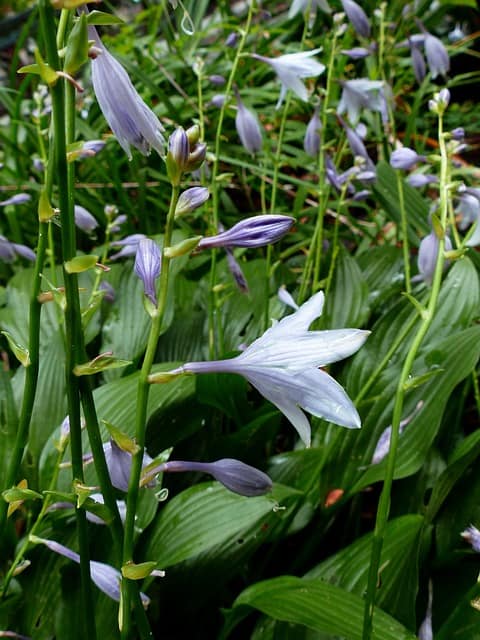
Hostas are often considered the quintessential shade plants, prized for their elegant foliage, which comes in numerous shapes, sizes, and textures. With varieties ranging from small, dwarf types to large, dramatic specimens, hostas ca easily transform the underlayer of any space beneath the trees.
These perennials thrive in rich, well-drained soil and prefer consistent moisture, making them ideal candidates for tree-laden areas where they can benefit from occasional dappled sunlight. Hostas create a lush backdrop that allows smaller flowers to shine, serving as an excellent foundation for your shaded garden.
In addition to their foliage, hostas produce spikes of lavender or white flowers in the summer, creating added interest. Their vast variety means you can combine contrasting leaf colors and shapes to build intriguing plant compositions. However, be cautious of slug populations, which can damage the tender leaves in more humid conditions; take appropriate measures to gently protect your beloved hostas.
Lungwort
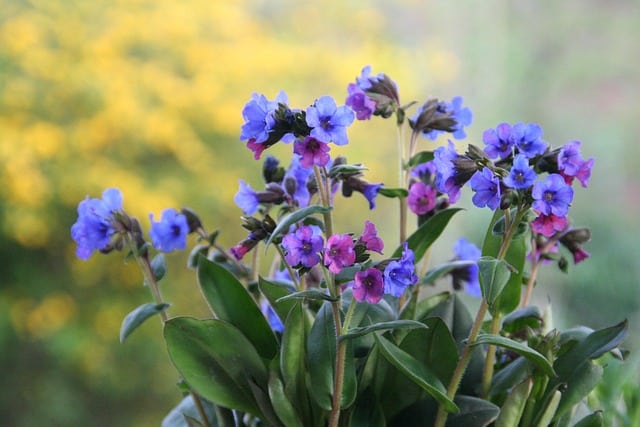
Lungwort (Pulmonaria) is often appreciated for its strikingly beautiful speckled leaves and clusters of small flowers that bloom in early spring. The colors can range from cobalt blue to shades of pink and white. This resilient perennial flourishes in shady environments, often forming vibrant mats beneath trees.
Lungwort is adaptable to various soils and moisture levels but tends to thrive in consistently moist conditions. Its ability to spread gradually makes it ideal for filling in bare spots and adds immediate interest to a shaded area. The foliage is not only decorative but can also invigorate the area when combined with other plants displaying contrasting textures.
Another advantage of lungwort is its pollinator-friendly characteristics. Its blooms draw bees and butterflies during their early emergence in spring, creating an inviting environment for wildlife. When designing your garden, consider pairing lungwort with other early bloomers for a flourishing display throughout the season.
Milkweed

Planting Milkweed (Asclepias) around trees is a beautiful initiative to support ecological health, particularly for Monarch butterflies. The flowers—often in vibrant tones of orange, pink, and yellow—serve as a crucial nectar source for pollinators while the leaves provide food for caterpillars during their transformation.
Milkweed thrives in full sun but can tolerate partial shade, making it a versatile choice for your gardens. It prefers well-drained soil and is drought-tolerant once established. With its tall and sturdy stems, it can create a vertical accent beneath trees, serving as a focal point for your landscape.
Not only does milkweed contribute to the beauty of your garden, but growing it cultivates an essential gathering spot for butterflies during their migration periods. By integrating milkweed into your planting design, you’ll create a charming atmosphere while helping sustain the local ecosystem.
Siberian Bugloss
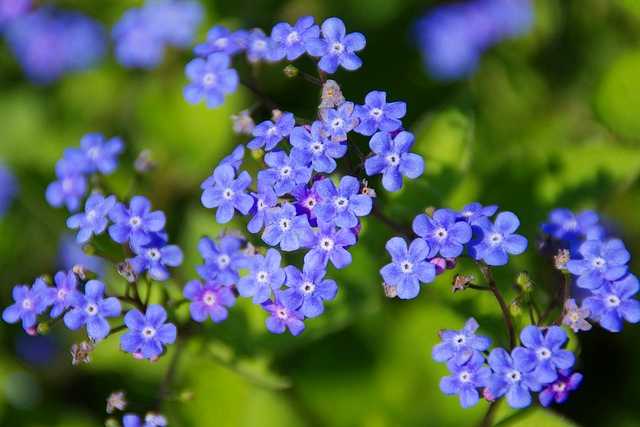
Siberian Bugloss (Brunnera macrophylla), with its breathtaking blue flowers and large heart-shaped foliage, can dramatically enhance shaded areas of your garden. Its small blooms, reminiscent of forget-me-nots, cover the plant in spring and create a bright, cheery display against the bold foliage.
This perennial thrives in partial to full shade and prefers rich, moist soil—making it a terrific choice for underneath trees. As a slow and manageable spreader, Siberian Bugloss creates a fantastic ground cover that helps suppress weeds while adding elegance to the undergrowth.
The beauty of Siberian Bugloss lies not only in its striking blue flowers, but also in its remarkable foliage, which can be variegated with shades of silver and green. Seasonal interest is sustained with its unique leaf patterns, providing an attractive backdrop for other blooming plants. Additionally, these flowers are a wonderful nectar source for pollinators throughout their blooming period.
Siberian Irises

Siberian Irises (Iris sibirica) are a captivating addition to shaded areas of your landscape, renowned for their striking blooms in spring. They boast an array of stunning colors, including deep blue, purple, and white, and feature slender, sword-like leaves that contribute to their elegant appearance.
Siberian Irises prefer consistently moist soils, making them suitable for shady spaces where water gathers after rainfall or irrigation. Their upright growth habit means they can provide height and structure to surrounding plantings, while their blooms attract pollinators, enhancing the ecological value of your garden.
These irises are relatively low-maintenance and can thrive in conditions ranging from full sun to partial shade. Their hardiness makes them a popular choice for both novice and seasoned gardeners. When planting, consider grouping them in clusters, which can create a striking focal point that draws the eye and stands out against the foliage of nearby trees.
Yarrow

Yarrow (Achillea millefolium) is a versatile perennial that is not only aesthetically pleasing but also contributes positively to the local ecosystem. Known for its flat-topped clusters of flowers in shades of yellow, pink, and white, yarrow blooms from late spring to summer, providing a long-lasting presence in the garden.
Yarrow is adaptable and can thrive in full sun or partial shade, though it does prefer well-drained soil. This is particularly advantageous in gardens characterized by heavily rooted trees. Once established, yarrow is drought-resistant, making it a sustainable choice for low-maintenance gardening.
Additionally, yarrow has medicinal properties and encourages beneficial insects, creating an inviting environment for pollinators. By incorporating yarrow into your shade garden, you can cultivate both a visually appealing and ecologically sound space. The plant’s feathery foliage also adds texture and variety, enriching the overall design of your shaded areas.
Begonia
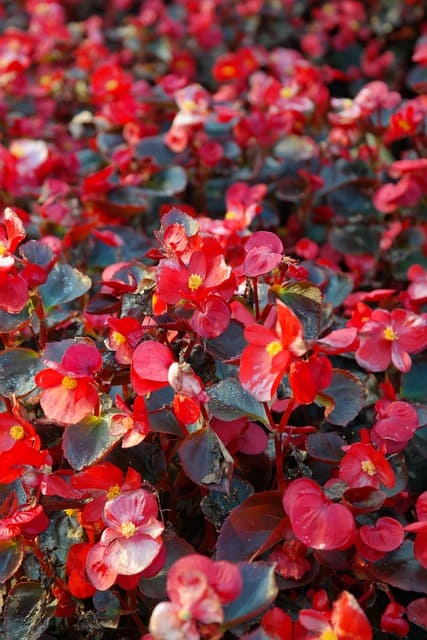
Begonias are a fantastic option for gardeners looking to introduce vibrant colors in shaded areas. With their lush green leaves and an almost infinite variety of flower colors—from bold reds and yellows to gentle pastels—these plants add cheerful contrasts under tree canopies.
Begonias thrive in moist, well-drained soil and do best in partial to full shade, making them a wonderful fit for planting around trees. Depending on your climate, begonias can be grown as annuals or perennial tender plants. They are also famous for their striking foliage, which often exhibits unique patterns and colors, enhancing their appeal even when not in bloom.
These plants are relatively easy to maintain, requiring regular watering but no excessive fussing. To create a dynamic planting scheme, consider mixing various begonias with other shade-loving perennials or combining them in different colors for a vibrant patchwork of blooms.
Coleus
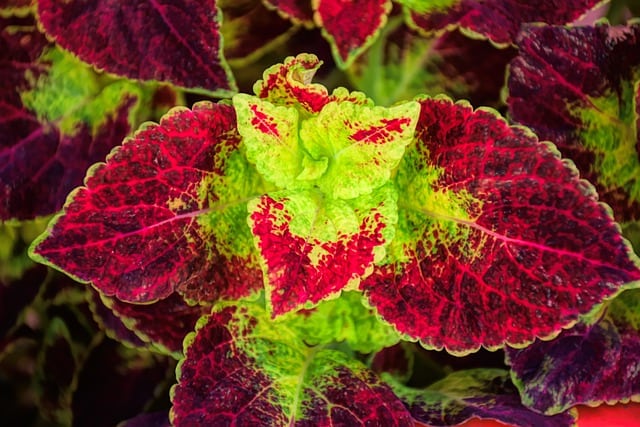
Coleus is a delightful annual that thrives in shady conditions and is available in an exciting variety of colors and leaf shapes. With their vibrant foliage—ranging from deep purples and reds to striking yellows—coleus plants can inject energy into your shade garden.
Coleus enjoys rich soils and consistent moisture, making it a great option for planting around tree bases where other plants may struggle. While they are often grown as annuals, they can also be propagated from cuttings, allowing you to maintain your favorites year after year.
With a variety that caters to various heights and leaf shapes, coleus plants can be beautifully layered alongside other blooms in your garden. This adaptability not only contributes to their visual appeal but also makes them an exciting choice for garden design. They attract minimal insect pests, making them easy to cohabit with other plants in shaded areas.
Creeping Jenny
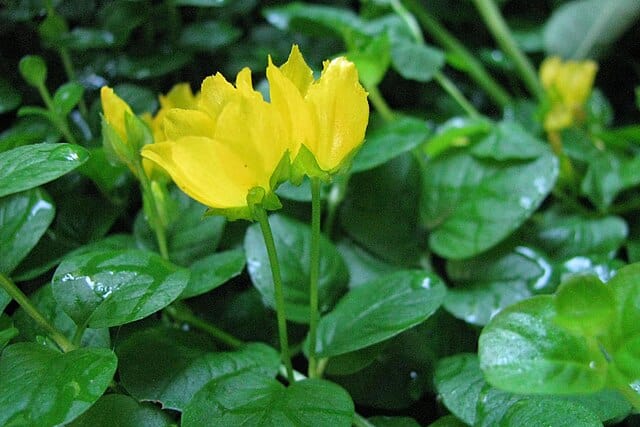
Creeping Jenny (Lysimachia nummularia) is a charming, low-growing perennial that bursts forth from the ground with fleshy, rounded leaves and delightful yellow, cup-shaped flowers in late spring. This plant is exceptional in shaded spots around tree roots, where its vibrant foliage can cascade down over rocks, pathways, or borders.
Creeping Jenny thrives in moist soil and partial shade but can adapt to a range of conditions, making it a flexible choice for diverse landscapes. The vibrant yellow-green foliage turns a bright golden hue in summer, adding a cheerful pop to shaded spaces, while its ability to spread quickly allows it to cover bare ground efficiently.
The plant’s low surface growth helps prevent weed competition while providing blossoms that attract pollinators in the spring. When planting, consider using Creeping Jenny as a border plant or trailing over stones to create a lovely effect that harmonizes with the surrounding garden decor.
Impatiens
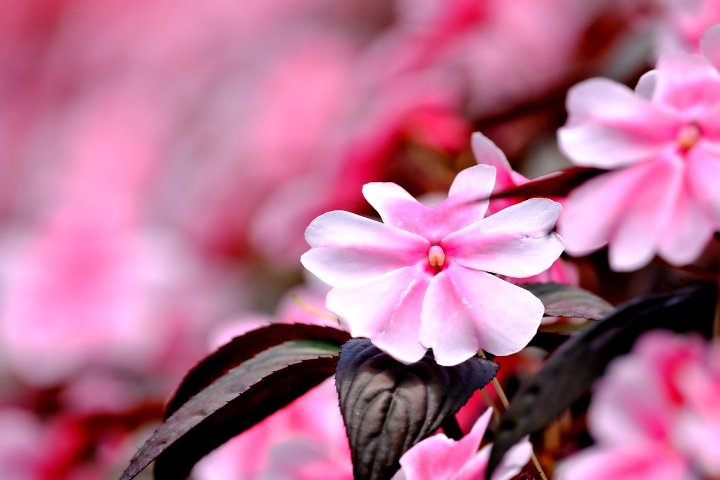
Impatiens are beloved for their colorful flowers that thrive in shade, making them a common sight in gardens around trees. With a variety of colors, including white, pink, red, and purple, impatiens can bring vibrancy to even the dimmest corners of your yard.
These annual plants prefer moist, well-drained soils and flourish in partial to full shade. Their low growth habit and generous blooming schedule make them excellent for borders or filling gaps beneath larger plants. They create a lush and inviting environment, filling spaces with cheerful blossoms throughout the entire growing season.
Impatiens are easy to care for, requiring regular watering without excessive fertilization. They can be grown in both beds and containers, allowing you to play around with arrangements. Ideal for introducing splashes of color beneath tree canopies, impatiens complete the charm of a hidden garden retreat.


